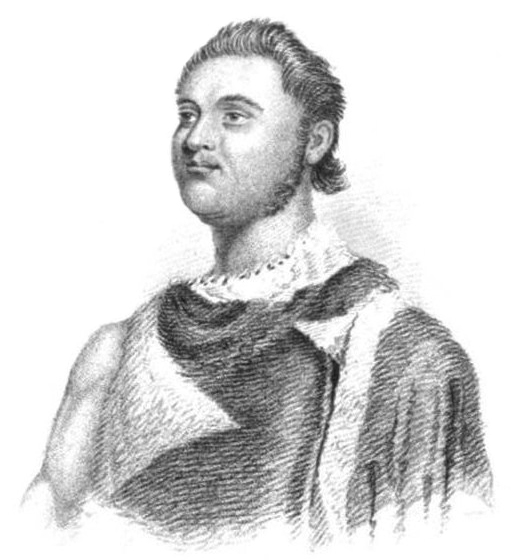|
John Young (advisor)
John Young ( 1742 – 17 December 1835) was a British British may refer to: Peoples, culture, and language * British people, nationals or natives of the United Kingdom, British Overseas Territories, and Crown Dependencies. ** Britishness, the British identity and common culture * British English, ... subject who became an important military advisor to Kamehameha Iand was married to his niece during the formation of the Hawaiian Kingdom, Kingdom of Hawaii. He was left behind by Simon Metcalfe, captain of the American ship ''Eleanora'', and along with a Welshman Isaac Davis (advisor), Isaac Davis became a friend and advisor to Kamehameha. He brought knowledge of the western world, including naval and land battle strategies, to Kamehameha, and became a strong voice on affairs of state for the Hawaiian Kingdom. He played a big role during Hawaii's first contacts with the European powers. He spent the rest of his life in Hawaii. Between 1802 and 1812, John Young ruled as Roya ... [...More Info...] [...Related Items...] OR: [Wikipedia] [Google] [Baidu] |
Governors Of Hawaii (island)
The Governor of Hawaii Island ( haw, Kiaaina o na Mokupuni o Hawaii) was the Governor, royal governor or viceroy of the Hawaii (island), Island of Hawaii during the Hawaiian Kingdom, Kingdom of Hawaii. The Governor of Hawaii was usually a Hawaiian chief or prince and could even be a woman. There were no restriction of women in government in the House of Nobles or Governorship of the islands. The Governor had authority over the island of Hawaii, the biggest island in the kingdom, and it was up to the governor to appoint lieutenant governors to assisted them. The governor had replaced the old Aliʻis of the islands, but sovereignty remained with the king. The island governors were under the jurisdiction of the Ministry of the Interior (Hawaii), Ministers of the Interiors. Role The 1840 Constitution of the Hawaiian Kingdom, 1840 Constitution of the Kingdom of Hawaii states: Abolition After King Kalākaua was forced to sign the 1887 Constitution of the Hawaiian Kingdom, Bayonet Con ... [...More Info...] [...Related Items...] OR: [Wikipedia] [Google] [Baidu] |
Kuakini
John Adams Kiiapalaoku Kuakini (1789–1844) was an important adviser to Kamehameha I in the early stages of the Kingdom of Hawaii. He was responsible for contributing to the infrastructure among other changes in the Kona District during this era. Family life He was born about 1789 with the name ''Kaluaikonahale''. His father was Keʻeaumoku Pāpaiahiahi, an alii (noble) from the island of Hawaii, and his mother was NāmāhānaiKaleleokalani, the widow queen and half-sister of the late king of Maui, Kamehameha Nui. Historian Samuel Kamakau later makes the contradictory claim that Kaʻiana was Kuakini's father and also claimed he was a ''poʻolua'' child (possessing two head or father). Keʻeaumoku became a fugitive from King Kahekili II of Maui. Escaping to Hana, the family moved back to Hawaii island and lived on Kahaluu Bay. He was the youngest of four important siblings: sisters Queen Kaahumanu, Kamehameha's favorite wife and later became the powerful Kuhina nui, Kalākua ... [...More Info...] [...Related Items...] OR: [Wikipedia] [Google] [Baidu] |
Kamehameha I
Kamehameha I (; Kalani Paiea Wohi o Kaleikini Kealiikui Kamehameha o Iolani i Kaiwikapu kaui Ka Liholiho Kūnuiākea; – May 8 or 14, 1819), also known as Kamehameha the Great, was the conqueror and first ruler of the Kingdom of Hawaii. The state of Hawaii gave a statue of him to the National Statuary Hall Collection in Washington, D.C. as one of two statues it is entitled to install there. Birth and childhood Paternity and family history Kamehameha (known as Paiea at birth), was born to Kekuʻiapoiwa II, the niece of Alapainui, the usurping ruler of Hawaii Island who had killed the two legitimate heirs of Keaweʻīkekahialiʻiokamoku during civil war. By most accounts he was born in Ainakea, Kohala, Hawaii. His father was Keōua Kalanikupuapa'ikalaninui; however, Native Hawaiian historian Samuel Kamakau says that Maui monarch Kahekili II had ''hānai'' adopted (traditional, informal adoption) Kamehameha at birth, as was the custom of the time. Kamakau believes this i ... [...More Info...] [...Related Items...] OR: [Wikipedia] [Google] [Baidu] |

.jpg)

